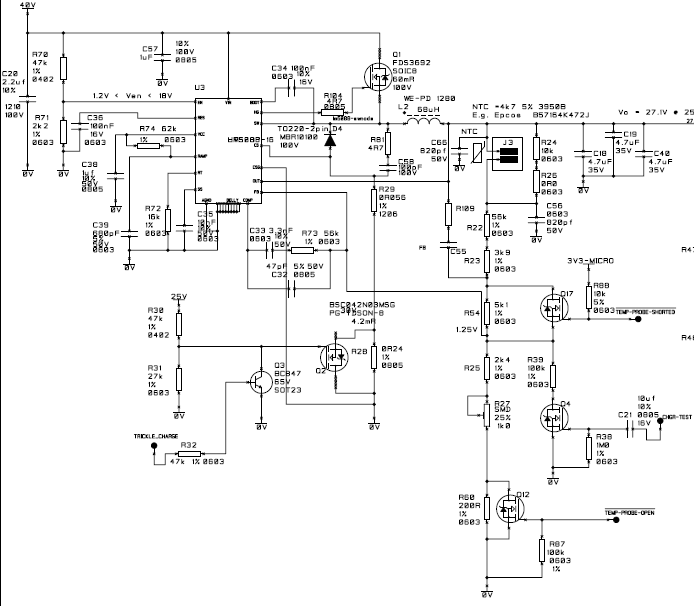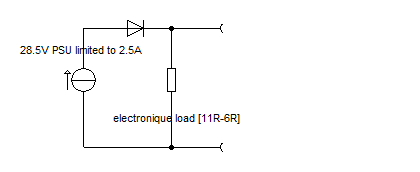LM5088 Buck converter 27.2V@25°C, Imax 1.4A, fsw ~370KHz
I have a problem with a buck converter used for charging a battery. It seems that when the battery voltage is very close to the charger voltage, the voltage regulation does not operate as expected. The feedback pin remains below the reference voltage. After some investigation I think the problem comes from an insufficient charging of the bootstrap capacitor. When the converter is running dry the regulation is fine and the amplitude of the command is fine.




